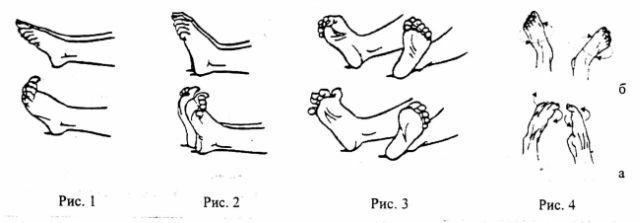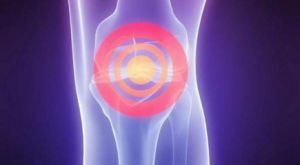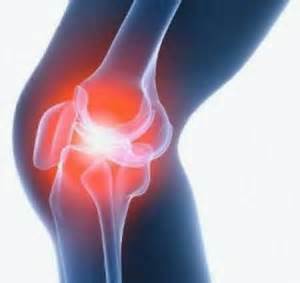 The knee joint is quite vulnerable, because it experiences enormous loads, as well as frequent mechanical effects due to bruises. After all, even during the game, a child often breaks his knees, rather than other parts of the body.
The knee joint is quite vulnerable, because it experiences enormous loads, as well as frequent mechanical effects due to bruises. After all, even during the game, a child often breaks his knees, rather than other parts of the body.
In connection with the presented aspects of the person begin to worry the pain in the knees, which increase with walking, and quite unexpectedly can disappear.
The reason for such recurring pain is the joint mouse. What is this "rodent" and how to deal with it?
Contents of the article
- Drift of the knee fragment
- Rod formation mechanism
- Causes of the disease
- How to identify the mouse?
- Diagnostic techniques
- Treatment only operative
- Complications of untimely intervention
Drift of a fragment on the knee
An articulated mouse is a fragment that moves smoothly in the knee joint. The fragment is a discarded particle of cartilage, bone tissue, meniscus or synovial membrane or a hardened fibrin clot.
A particle periodically clings to articular surfaces, which causes painful sensations.
The size of the mouse can be different: from a small particle in the form of rice to large fragments that do not have a separate shape.
Experts note the appearance of a fragment, although in their practice there were also quite rare cases with the presence of up to 7 particles simultaneously in one joint.
Mechanism of formation of rodent
In addition to the mentioned reasons for the appearance of fragments in the form of bruises, the articulate mouse can appear and with such diseases as:
- arthritis;
- deforming arthrosis;
- osteochondritis;
- Koenig's Disease;
- hemarthrosis is a congestion in the knee joint of blood that has arisen due to a knee injury.
In the presence of these diseases, in the process of inflammation of the knee joint, there is a rejection of particles leading to the formation of a mixed bone-cartilaginous capsule, which is characterized by free movement.
It is a small clot of fibrin, which later fuses with a connective tissue, resulting in a fragment, reminiscent of bone tissue.
 The medical extension of the spine is gaining popularity among patients. How the traction therapy is conducted can be found in our article.
The medical extension of the spine is gaining popularity among patients. How the traction therapy is conducted can be found in our article. By what rules should adaptive exercises Bubnovsky for the joints and sets of exercises for each part of the spine.
Causes of the disease
One of the causes of the articular mouse in the knee joint is the inflammatory processes that lead to the appearance of fibrin.
In addition to the knee injury, the following causes of mouse formation can be distinguished:
- Any injury to the leg - dislocation or fracture - can lead to a sharp stretching of the muscles or tendons that caused the
 particles to come off.
particles to come off. - Severe physical labor resulting in chondromatosis ( Koenig disease).During frequent physical exertion and when wearing weights, micro-traumas of the femur occur. As a result, a malnutrition is noted, as a result of which degenerative processes begin.
In the knee joint, the bone has a rounded shape( called the epiphysis), which dies during the described changes and eventually disappears into the joint cavity.
To prevent the formation of the articular mouse, a person should protect himself from frequent physical exertion and monitor the condition of the joints.
How to identify a mouse?
The articulate mouse can not show itself for a long time with any discomfort, therefore the formed fibrin can reach impressive sizes.
A severed bone particle due to its inherently dense and firm structure can lead to painful sensations in the first days after formation.
In case of symptoms the patient should immediately consult a doctor, especially if there are inflammation of the knee joint or a leg injury.
Symptoms of articular mouse formation:
- A person does not feel the characteristic symptoms of the manifestation of the articular mouse, if the fragment has hidden into the area of the synovium envelope. In this case, the determination of its presence is carried out only by the palpation of a specialist in the field of the knee joint.
- Severe pain with partial immobility is observed , if the splinter blocked the entire joint. Pain is of an unstable nature, appears when the position of the body, leg, or walking changes. Unexpected manifestation can also suddenly disappear when the position changes.
- Knee joint blockage over time leads to swelling and inflammation of the knee and leg .Such a frequent blockage is dangerous with the complete immobilization of the foot, as damage to the cartilaginous tissue occurs, as a result of which the articulations of the joint begin to ache and freeze.
- After an injury to , a person can be tormented by long and aching knee pain, occurring intermittently. Such manifestations are written off as bruises, sprains and other trifles. It is inattentive attitude to yourself leads to unpleasant consequences, because such pains "the body signals" about the beginning of the process of splitting. Thus, a detached particle can for a long time hold on to cartilaginous or bone tissue.
For any of the manifestations indicated, contact your doctor and describe your symptoms in detail. He can precisely determine the cause of pain.
Diagnostic techniques
The diagnosis of the treating doctor is always accompanied by the results of the survey.
Often the patient is sent to X-ray, a picture of which will help to identify the cause of pain and confirm the expert's assumption.
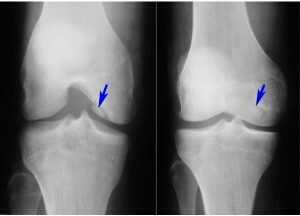 But the snapshot may not reveal the presence of a fragment in the knee joint. This is due to the fact that the articular mouse is insensitive to X-rays because of its structure.
But the snapshot may not reveal the presence of a fragment in the knee joint. This is due to the fact that the articular mouse is insensitive to X-rays because of its structure.
In this case, the specialist will send the patient to the examination using ultrasound or computed tomography.
All examinations may not be useful if the splinter is large enough and it can be felt for palpation. The patient can also detect a fragment by fixing a leg in a certain position or while moving.
Treatment only operative
Often an articulate mouse can exhibit sharp and severe pain in the knee at the most unexpected and inopportune moment.
If a person can not step on his leg, he needs to call an ambulance or take it to the hospital himself.
Before sending to the clinic, fix the leg of the patient with a flexible bandage so that it remains stationary. You can also use a special knee pads or a normal bandage, by placing a latch( stick, board) underneath it.
Removal of the articular mouse in a conservative way, also treatment with folk remedies is impossible.
No medication will help in resorption of the bone, cartilage or clot of fibrin.
Treatment is performed only by an operative route, as a result of which the fragment will be removed.
The operation can take place in various ways, depending on the location and size of the fragment. So, there are two ways to remove the articular mouse:
- Arthroscopy - The removal of the discarded particle is performed by inserting the instruments into the knee through two holes. One of them introduces an optical device that displays the image on the screen. A joint mouse is extracted from the second opening. The operation is performed under local or spinal anesthesia. Recovery takes several days.
- Traditional surgical intervention - includes general anesthesia and knee joint opening by incision of soft tissues. Recovery after surgery can take more than two weeks. In especially severe cases - up to several months.
In order not to bring the situation to a long recovery, experts strongly recommend contacting them for help with the first manifestations of pain symptoms.
Complications of untimely intervention of
In case of untimely surgical removal of the articular mouse, a person risks losing the 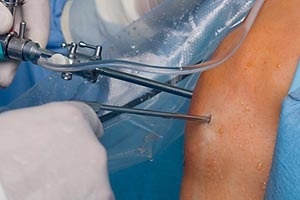 limb for life.
limb for life.
So, a large fragment will destroy cartilage and bone tissue, resulting in the knee joint will lose its former mobility due to disruption of all metabolic processes containing tissue nutrition.
Such changes can lead to the presence of a constant aching pain, changing a strong painful pain with the slightest movement of the foot.
The articulate mouse, even after removal, may reappear in the event that the cause was not in the injury of the leg or knee joint.
Fragments can be formed in inflammatory processes, whose treatment after the operation should be strengthened, by taking appropriate medications.

